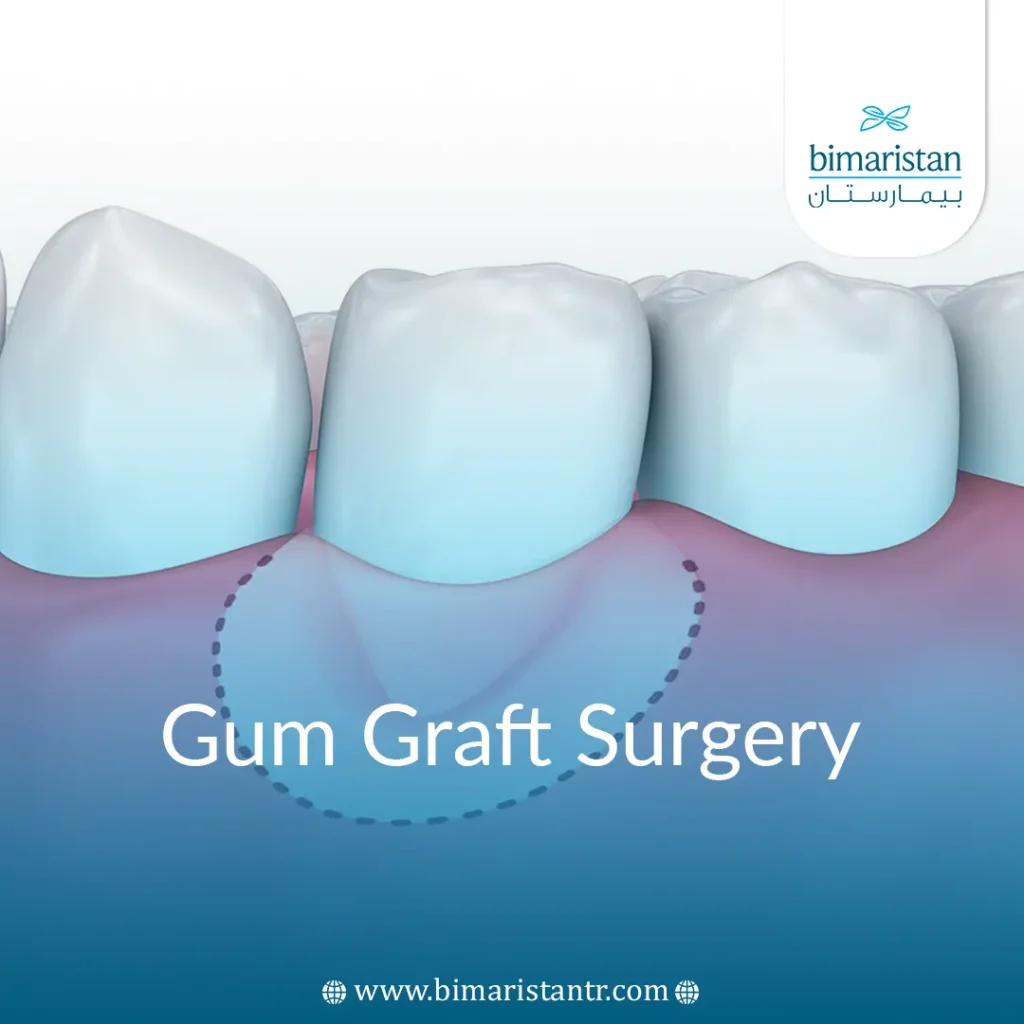Gum Graft Surgery is a relatively quick and simple surgery to correct receding gums. A periodontist uses grafts to cover and repair the area of recession.
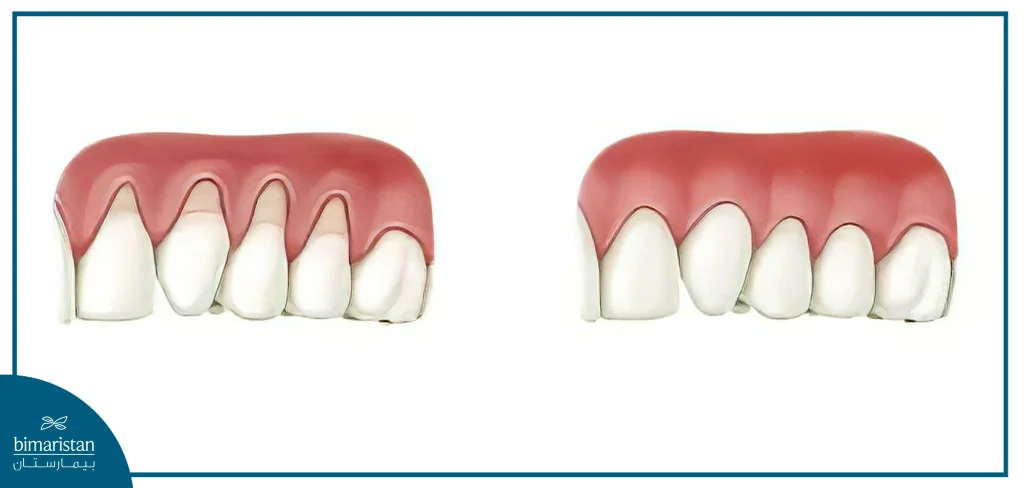
What are receding gums?
Gum recession is a form of gum disease that occurs when the gum tissue pulls away from the teeth, exposing the roots of the teeth underneath. This causes increased sensitivity, especially when brushing and eating or drinking hot or cold foods. The teeth also become more susceptible to decay.
Gum recession can be mild, moderate, or severe, affecting one or more teeth.
Receding gums causes
One of the main causes of gum recession is irregular or abnormal tooth positioning. If there is crowding in the jaw, some teeth may protrude and deviate.
Another causative factor is genetics, as genetic factors may cause a person’s gums to be thin, fragile, or lack sufficient tissue.
Causes of recession include aggressive toothbrushing, trauma to the gum tissue, and some gum diseases.
There are other factors that increase the chance of developing it, including:
- Gum inflammation.
- Dentistry or other orthodontic treatments.
- Chewing tobacco.
- Having a hole in the lips or tongue.
Gum recession can occur in people of all ages, but it is most common in people over 65. Gum recession is a common problem affecting approximately 88% of people over 65 in one or more teeth.
Since gum recession tends to happen slowly over time, many people don’t realize it’s happening to them. If left untreated, it can eventually lead to tooth loss.
Why should gum disease be treated?
Gum disease can cause additional health problems such as cardiovascular disease and diabetes.
By maintaining good oral hygiene and regular dental checkups, anyone can reduce their risk of developing gum disease early if it does occur.
When do you need a gum graft?
Some people choose to have a gum graft for cosmetic reasons, such as a more beautiful smile, while for others, it is necessary to protect exposed teeth from damage and repair any damage that has already occurred.
When mild recession is left untreated, the cause is likely to continue to recede, and bone loss around the teeth occurs. Treatments for gum recession vary depending on the type and severity of the condition.
If the cause is excessive toothbrushing, your dentist will advise you on the most effective methods for cleaning your mouth and then perform the necessary intervention to correct the condition to restore the gum position.
What happens during a gum graft surgery?
Istanbul Bimaristan Center offers a variety of implants. The type of implant surgery performed depends on the extent and severity of the bone damage in the jaw and the individual needs of the person. The periodontist will discuss the different types of surgeries available with the person to determine the most appropriate option.
Before starting the gum graft surgery, the patient is placed under local anesthesia to numb the area so that he/she does not feel pain during the procedure. He/she may also remove some gum to expose and clean the tooth root.
Three different types of grafts will be taken during the gum implant procedure:
Connective tissue grafts
In this procedure, the periodontist:
- Removes tissue from the roof of the mouth by lifting a flap and removing tissue from below the surface layer.
- Sew the tissue taken to the existing gum to cover the exposed tooth root.
- Sews the area of the flap on the roof of the mouth where the tissue was taken to close it
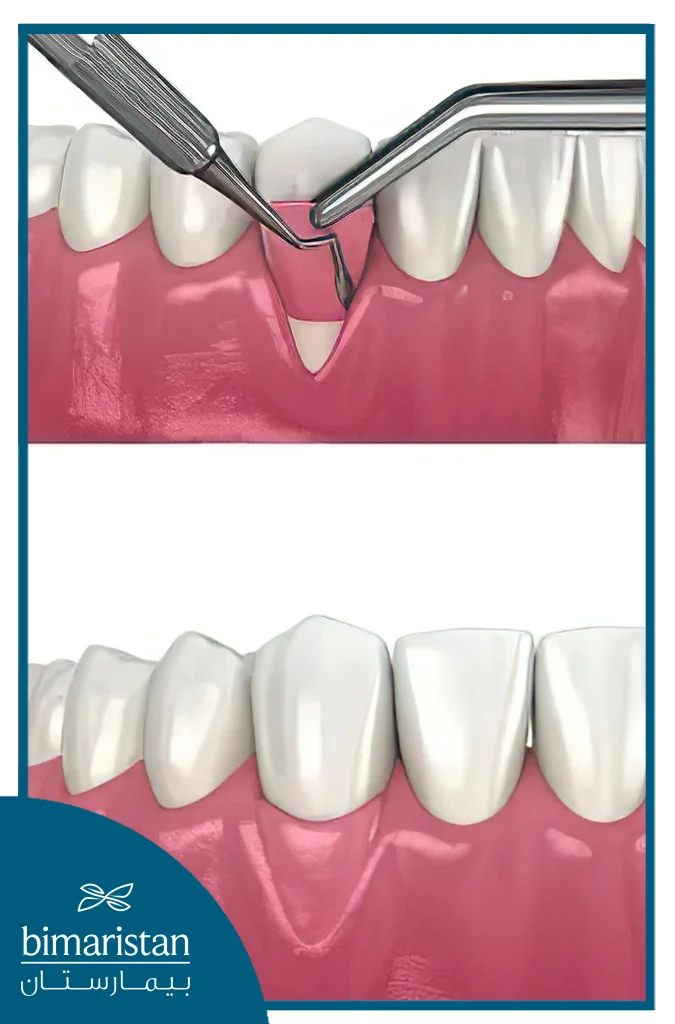
Free Gingival Graft
This method is preferred for people with thin gums who need additional tissue to increase the width of the gums. The steps of this procedure:
- The surgeon removes tissue from the upper layer of tissue on the roof of the mouth.
- This tissue is sutured to the existing gums that need to be thickened.
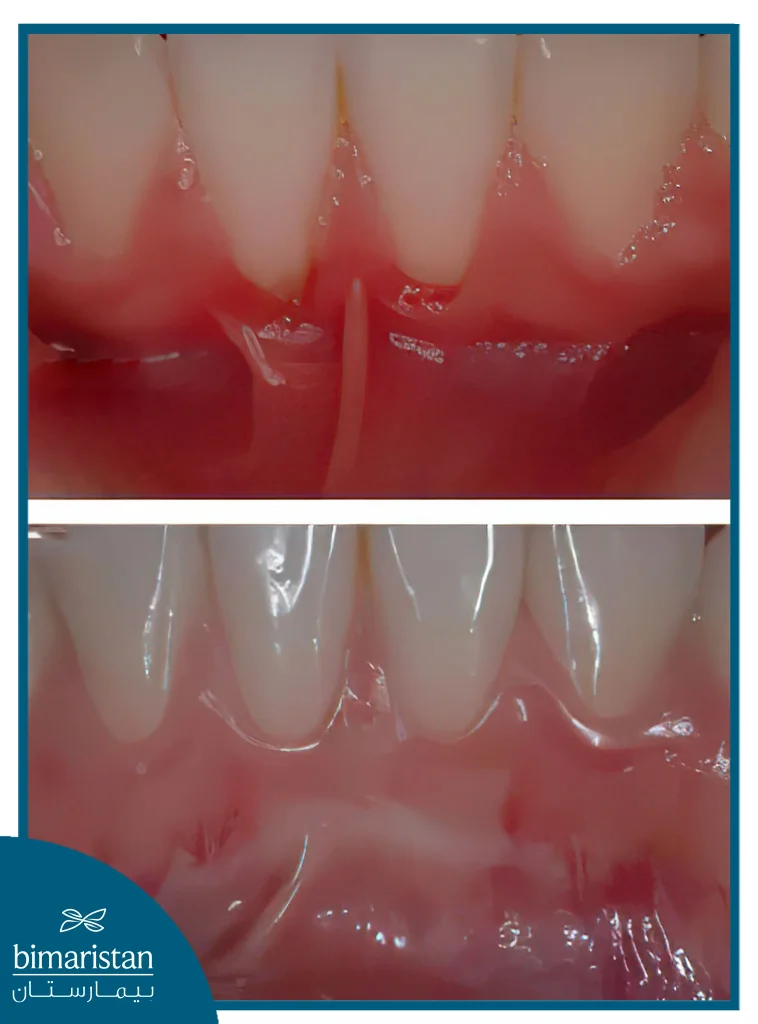
Lateral shift flap
This technique is preferred for people with a lot of gum tissue growing near the exposed tooth.
In this procedure, the periodontist:
- Dissects the gum tissue around or near the tooth requiring treatment
- This tissue is partially incised, leaving one edge intact
- The tissue is pulled up or down so that it covers the exposed tooth root and is held in place with stitches
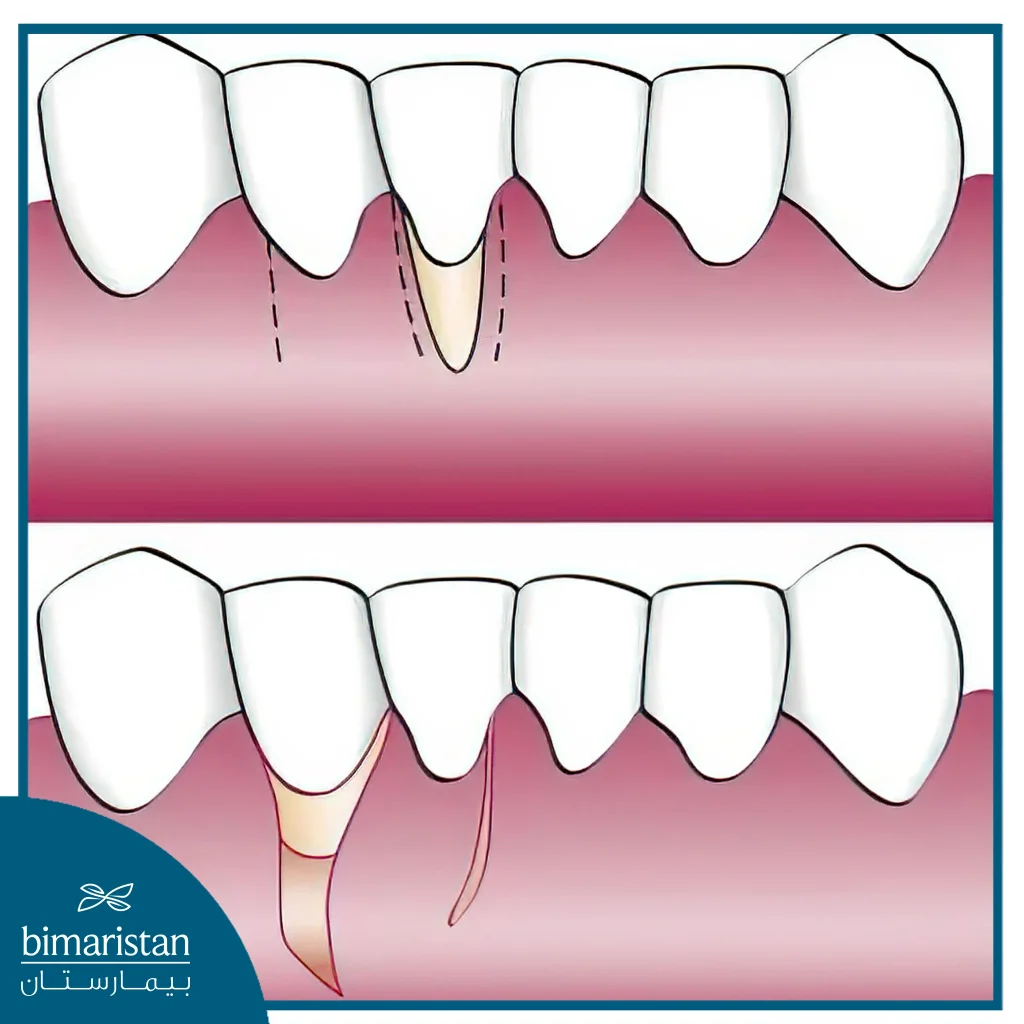
The periodontist may remove tissue from a tissue bank and use it instead of removing gum tissue from the person’s mouth.
Preparing for a Gum Graft
Once the patient and dentist have considered all options and decided on the type of surgery, the patient does not need to do much else to prepare for the procedure.
However, it is crucial to make sure that a family member or friend is available to drive to and from the dental office. This is important because the pain medication prescribed to control discomfort means that it is unsafe for the person having gum graft surgery to drive.
People who receive gum grafting can return home immediately after the procedure. The dentist will discuss several aftercare instructions to ensure that the gum graft site heals successfully.
Gum graft recovery steps
Anyone can help with recovery after a gum implant by:
- Avoiding flossing or brushing the gum surgery site
- Using a special mouthwash that controls plaque buildup
- Taking antibiotics to reduce the risk of gum disease
- Avoiding strenuous exercise
- Avoiding hard foods
- Eating soft, cold foods such as ice cream, pasta, eggs, yogurt, and soft cheese
- Avoiding smoking
The pain and discomfort a person experiences will vary depending on the surgery. For example, if the periodontist uses a ready-made implant, a person should feel minimal pain. If he or she removes tissue inside the roof of the mouth to obtain the implant, a person may feel pain for a few days.
Healing is often quick, taking one to two weeks for the mouth to heal completely, but it may take longer. People can take over-the-counter pain relievers or prescription medications to help manage any discomfort. Most people can return to work the next day.
After a gum graft surgery, your teeth may be more sensitive than usual, especially to hot and cold foods. You may benefit from using a desensitizing toothpaste or mouthwash.
You will likely have a follow-up appointment with your dentist once after surgery to check that the procedure is successful and that healing is progressing. Any stitches will also be removed. Not only will your gums look different after surgery, but they may also feel tighter and firmer.
Are there any complications after gum graft surgery?
Complications from gum graft surgery are rare and uncommon. Some people may experience:
- Bleeding gums
- Swelling gums
- Feeling of weak teeth (this should be temporary)
- Sensitive teeth
- Gaps between teeth
- Infection
Sometimes, the graft portion of the gum tissue may not be adequately attached to the implant site. This is very rare, but if this happens, you may need treatment and re-surgery to repair the damage.
Some people are unhappy with the way their smile looks after gum graft surgery. In these cases, a periodontist may perform gum reshaping to help improve the appearance of the gums.
When to seek medical help?
People should make an appointment to see a dentist as soon as possible if they experience any symptoms that suggest gum disease after surgery. Symptoms of gum disease include:
- Bleeding that lasts for more than 20 minutes despite pressure
- Unexpected pain, swelling, and bruising
- Fever and pus
Cost of gum graft surgery
The cost of gum graft surgery varies depending on the case, and the procedure usually depends on the type of surgery required. A person who decides to have gum graft surgery should consider the following:
Alternative treatments: If the gum recession is already severe, tooth extraction may be necessary. In this case, you will replace the missing teeth with dental implants and other prosthetic options.
Cost of surgery: If a person is considering implants for cosmetic reasons only, they will likely have to pay for the procedure out of their own pocket.
Treatment: Untreated gum recession can lead to severe gum infections and eventual tooth loss.
Gum graft surgery is an effective procedure to restore receding gums, protect teeth, and improve the appearance of your smile.
With different types of grafting surgeries available, each procedure carries minimal risks and typically results in only minor discomfort. Most patients can expect a full recovery within two weeks, making it a reliable option for treating receding gums.
If you are looking for a place for treatment, Bimaristan Medical Center remains your first choice for treatment in Turkey,
We guide you to the best expert specialists in all departments, facilitate communication between you and everyone through specialized Arab doctors who will help you communicate with your doctor, help you secure appropriate treatment and high-quality service in the most modern hospitals and medical centers in Turkey, provide our services on a large scale and accurately.
We accompany you step by step towards recovery. Do not hesitate to contact us; Bimaristan Center is your family in Turkey.
Gum grafting is an effective procedure to restore receding gums, protect teeth, and improve the appearance of your smile.
With different types of grafting surgeries available, each procedure carries minimal risks and typically results in only minor discomfort. Most patients can expect a full recovery within two weeks, making it a reliable option for treating receding gums.
Sources:
